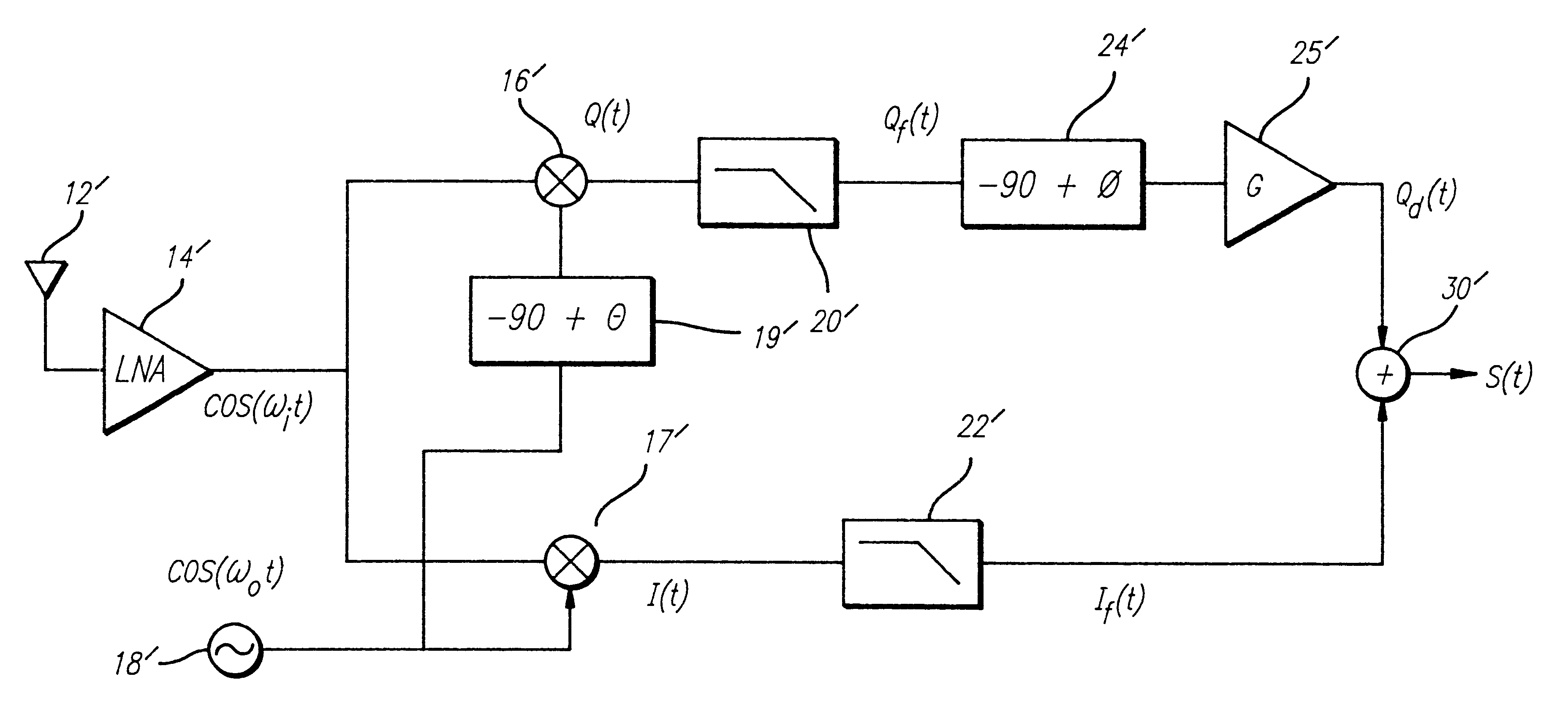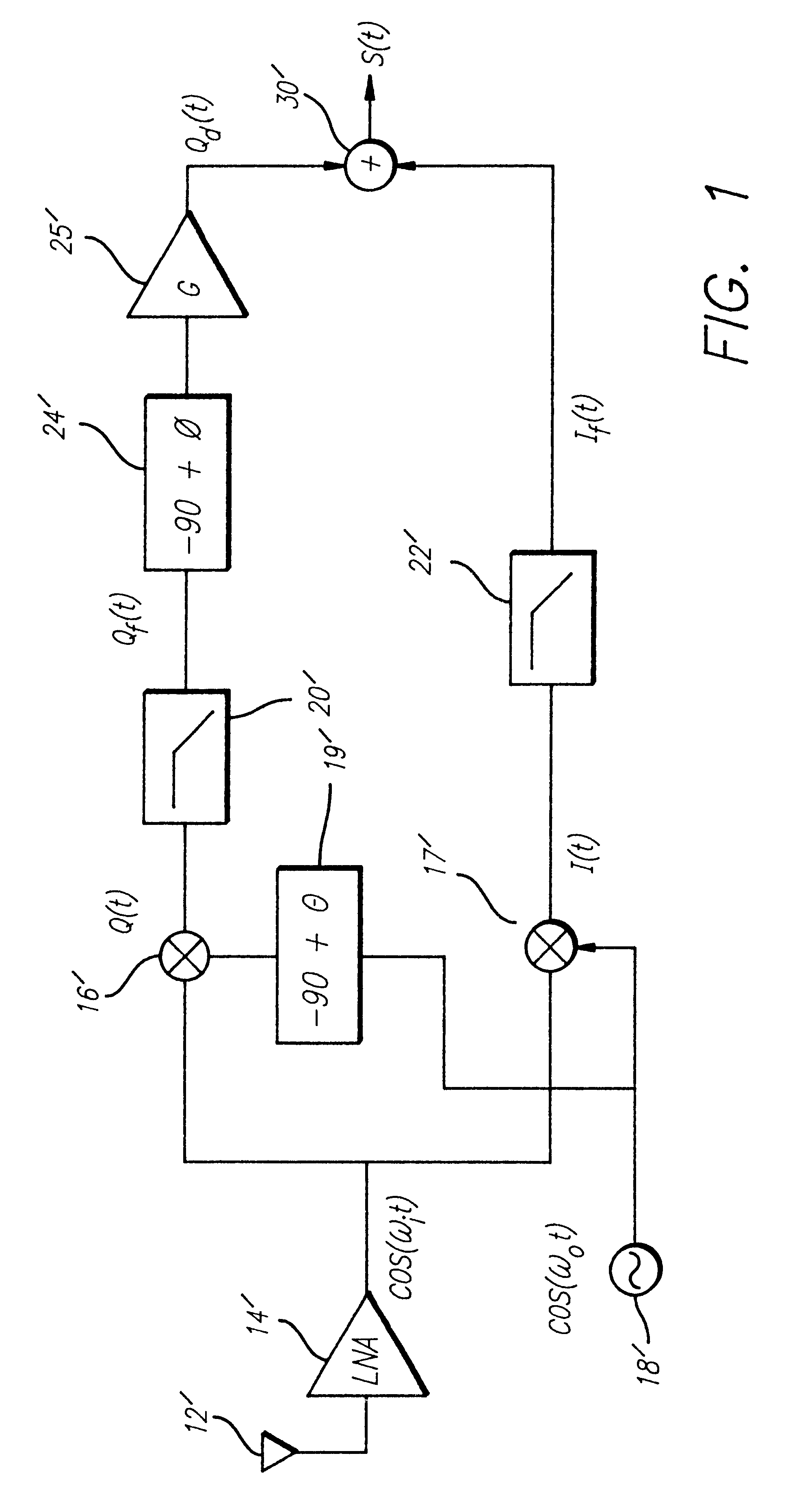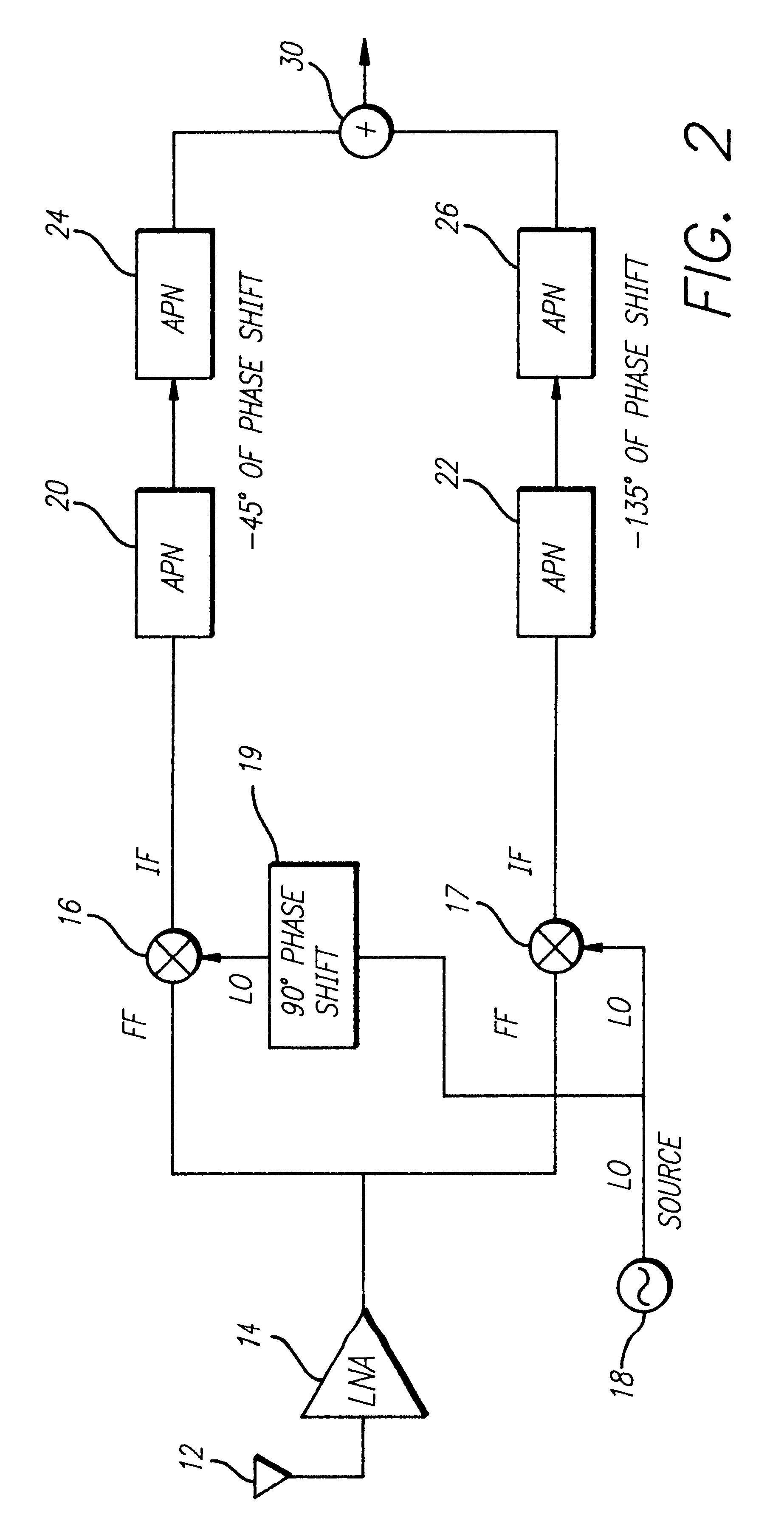Wideband IF image rejecting receiver
a receiver and wideband technology, applied in the field of communication systems, can solve the problems of affecting the desired signal, difficult to achieve consistent gain and bandwidth rejection over a wide range in a tuned amplifier, and impede the ability of the amplifier to track each other with sufficient accuracy
- Summary
- Abstract
- Description
- Claims
- Application Information
AI Technical Summary
Problems solved by technology
Method used
Image
Examples
Embodiment Construction
Illustrative embodiments and exemplary applications will now be described with reference to the accompanying drawings to disclose the advantageous teachings of the present invention.
While the present invention is described herein with reference to illustrative embodiments for particular applications, it should be understood that the invention is not limited thereto. Those having ordinary skill in the art and access to the teachings provided herein will recognize additional modifications, applications, and embodiments within the scope thereof and additional fields in which the present invention would be of significant utility.
FIG. 1 is a block diagram of a typical conventional implementation of an image rejecting receiver. The receiver 10' includes an antenna 12' which provides a received signal to a Low Noise Amplifier (LNA) 14'. The LNA14' outputs an RF (radio frequency) signal to first and second mixers 16' and 17', respectively. A local oscillator 18' provides a reference signal ...
PUM
 Login to View More
Login to View More Abstract
Description
Claims
Application Information
 Login to View More
Login to View More - R&D
- Intellectual Property
- Life Sciences
- Materials
- Tech Scout
- Unparalleled Data Quality
- Higher Quality Content
- 60% Fewer Hallucinations
Browse by: Latest US Patents, China's latest patents, Technical Efficacy Thesaurus, Application Domain, Technology Topic, Popular Technical Reports.
© 2025 PatSnap. All rights reserved.Legal|Privacy policy|Modern Slavery Act Transparency Statement|Sitemap|About US| Contact US: help@patsnap.com



